Minn Chris Grinter, fuq 1 Lulju, 2010 U issa għas-serje saħansitra aktar frekwenti reoccurring, VOX populi! Għal dawk mingħajr memorji ċikatriċi iskola għolja ta 'klassi latin (mingħajr ebda tort għalliem tiegħi) I ser iġibu inti sa veloċità – it-titolu madwar jittraduċi għal “vuċi tal-poplu”. Hawnhekk hija antika e-mail ieħor li stajt ġew iffrankar. Huwa 100% messaġġ reali, imma naturalment jien redacted l-ismijiet u l-indirizzi reali biex jipproteġu l-innoċenti. Igawdu! I wkoll ħafna jinkoraġġixxu sottomissjonijiet tal tiegħek-
Xitwa 2008:
“Hi, Jien ferħan I misjuba inti. Issa, Nispera li inti tista 'tgħin me. 1982, filwaqt ikkampjar fi camp minjieri tad-deheb antik fil-Mendocino Foresta Nazzjonali I kien bitten by a spider kannella kbir. Hija ħadet tlett ijiem għall-velenu li jgħaddu permezz tas-sistema tiegħi. Fuq tlett ijiem I kien 95% blind, il-gidma minfuħ għal kbir bump aħmar grotesquely fond fuq driegħ tiegħi. I ser qatt tinsa l- 12 siegħa l-velenu attakkat me. Il-prezz I payed biex jgħixu din velenu Brimb kien…….li titlef assolutament kollha xaħam tal-ġisem tiegħi. I Tkellem ma 'tabib minn Santa Rosa bit-telefon minn post ħbieb (xi belt CA żgħira). Kien jaf dwar dan brimba u ma setax jemmen I suvived l-velenu meta I qallu I tilef kull xaħam tal-ġisem tiegħi. Huwa wkoll told me kien impossibbli għal xi ħadd li jgħix jitlef kulħadd xaħam tal-ġisem tagħhom fil 12 sigħat. I fakkritu li dan kien f'sitwazzjoni impossibbli. He told me li dan brimba qiegħda tinżamm mill-pubbliku. Nemmen li dan brimba ġew miċ-Ċina jew ir-Russja. Dawn brimb ma naqbilx ma xejn ma brimb Cali oħra. Huma jkollhom korpi kbar u s-saqajn stout qosra. Il-mara li ftit lili kien ta 'madwar 4 tal-pulzier u, kellhom 5 irġiel. Erba 'snin wara, filwaqt li jgħixu fl-għoljiet Hayward, I ma setax jemmen għajnejn tiegħi, running madwar l-art, xulxin. Dan spider kien ta 'madwar 6 tal-pulzier. Naf dawn brimb ma tluq ħitan jew nisġiet ispin. Huma jibnu bejta tal-, u jiksbu 4-5 irġiel biex jipproteġu tagħha u jsibu l-ikel. Il-mara qatt tħalli l-bejta ħlief…………meta mara akbar drives tagħha barra u, joqtol irġiel tagħha. Dan huwa meta n-nies huma bitten minn din brimba, kif hi runs madwar tfittex għal bejta ieħor. Gdim mhumiex komuni ħafna. I CROWLEY………….kemm hu kbir kien il-femminili li saq dik 6 pulzier mill bejta tagħha. U………….kemm hu kbir do huma jiksbu. Nista 'nsib dan brimba fuq display fil (mużew tiegħek)? Huwa possibbli li ssib l-informazzjoni tagħhom hija fuq din brimba perikolużi ħafna?”
Continue reading Vox Populi, volum II
Minn Chris Grinter, fuq Ġunju 26, 2010 Merħba għall-volum tmien tas-serje inkonsistenti reoccurring, Genius tal-Istampa. I sab dan l-artikolu reċentement dwar xi farfett Rika Puerto endemiku. Min jista tell me eżattament għaliex dan ir-rapport hija qarrieqa? Hija tista 'tkun ftit delikati mill-GOP standard (Nissuġġerixxi rimi xi akronimi assoċjati preċedentement ma 'dawk l-ittri). Ħjiel, biss javżak me l-farfett fl-istampa huwa mill-Malasja mhix it-tweġiba jien infittxu!
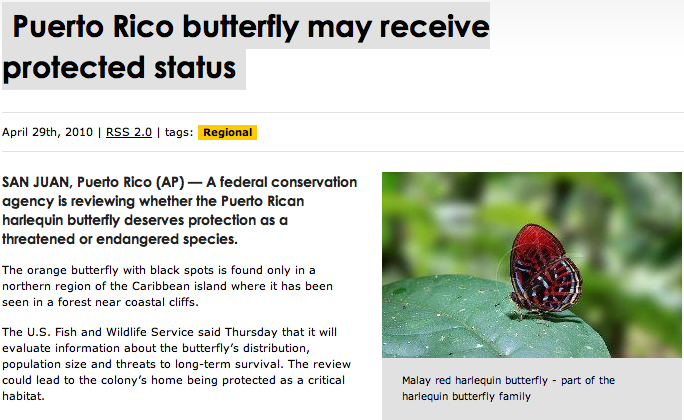
Minn Chris Grinter, on June 23rd, 2010 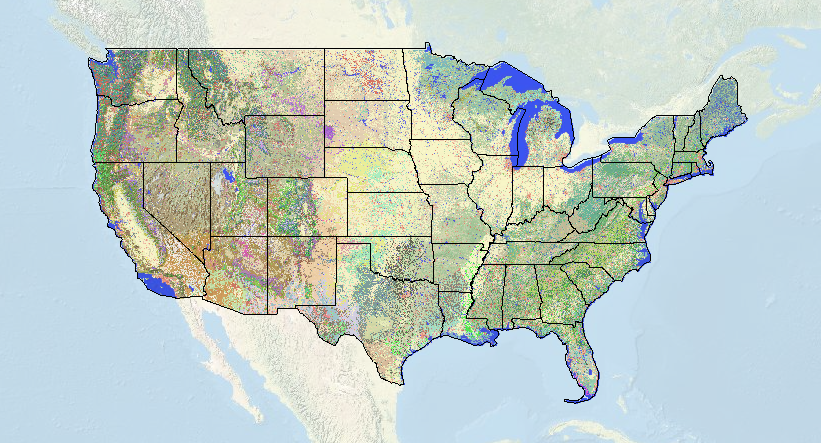
I’ve always wondered how to find the correct terminology for land cover in a given area. Usually, I just ballpark something along the lines of “oak chaparral”. But now I can use this awesome new map brought to us by the USGS/National Biological Information Infrastructure. The level of detail is amazing, and you can specify the degree of accuracy with a drop down tab (1-3). Now with a high-def US topo map I can see exactly where the largest stands of monterrey pine are (actually it’s a California Coastal Closed-Cone Conifer Forest and Woodland) so I can optimally place my trap this weekend.
Continue reading Landscape Cover Map
Minn Chris Grinter, on June 18th, 2010 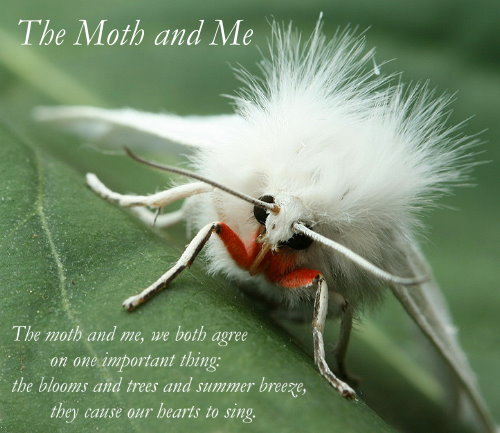
Welcome to The Moth and Me #12, and my first blog carnival. Despite blogging for a few months I have yet to take a look back and reflect on exactly how I became enamored with lepidoptera in the first place. Remembering a time or location where this happened is impossible, and like many of my colleagues and I’m sure many of my readers, I had a butterfly net and “bug cage” in hand as soon as I could walk. When it comes to entomology I believe almost everyone falls in love at first with a large and striking insect. For me it was a butterfly, naturally. I can remember staring for endless hours at the diversity of Ornithoptera and Papilio illustrated in Paul Smart’s famous book. Somewhere along the way in pursuit of something new I began to stray into the nocturnal world. Moths comprise the majority of the diversity of Lepidoptera; while there are nearly 11,000 species in the United States, only a few hundred are butterflies. This quickly opened a door (maybe into an abyss…) to the shocking abundance found everywhere around us. This amazing diversity has now drawn me deep into the biology and evolutionary history of the Lepidoptera. Editing these fourteen contributions of moth blogging together I just can’t help but to reflect back on some of my own mothing journey.

Perhaps if I was a child in Europe this moth (Deilephila elpenor porcellus) would have been the first to catch my eye. Over at Urban Moths Ron Laughton has discovered the stunning diversity in his own back yard in much the same way as I did growing up here in the US. Take a look at the types of traps he has been using, most of which he constructed himself. One of the best behaviors of moths is their willingness to dive headlong into the light. Not too far from Ron, Mike Beale has been blogging british moths as well. It can be pretty amazing just how similar our two faunas are (a few moths actually are the same).
Continue reading The Moth and Me #12
Minn Chris Grinter, on June 11th, 2010 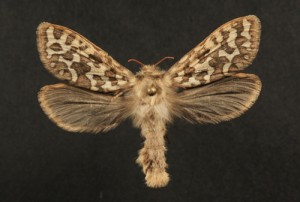
Din il-kamla hija rari daqs l-isem paranormali tagħha (ħlief li huwa reali) – huwa Gazoryctra sp. fil-familja Hepialidae. Dawn jirrappreżentaw nisel bażali tal-Lepidoptera u huma komunement magħrufa bħala ghost moths jew swift moths. Ghost – għaliex l-irġiel ta’ xi speċi huma magħrufa li jtiru f’leks veri, fejn iduru 'l fuq u' l isfel fi ikklerjar bil-ħaxix mal-għabex waqt li n-nisa josservaw. Dawn l-istess irġiel jitolbu wkoll nisa bil-feromoni, sitwazzjoni daqsxejn lura bl-insetti. Swift- pjuttost evidenti minnu nnifsu, iżda l-ispeċi boreali ġew magħrufa li huma flyers qawwija.
Waħda mill-karatteristiċi li tgħin biex tindika dan bħala nisel bażali hija t-tqegħid tal-ġwienaħ fuq il-ġisem, xi venation tal-ġwienaħ, partijiet tal-ħalq imnaqqsa jew assenti u n-nuqqas ta 'apparat qawwi ta' akkoppjar tal-ġwienaħ. Dawn il-kamla għandhom a “madmad”, li huwa thumb żgħir bħal projezzjoni mill-parti ta 'fuq tal-ġwienaħ ta' wara. Niselijiet oħra ta 'kamla għandhom mekkaniżmu ta' akkoppjar strett magħruf bħala l-frenulum u retinaculum, fejn il-lanżit jgħaqqdu ż-żewġ ġwienaħ flimkien sabiex jibqgħu akkoppjati waqt it-titjira. Meta tkun mistrieħa il-jugum jintewa u probabbilment jgħin biex iżżomm il-ġwienaħ flimkien – imma mhux waqt it-titjira; il-ġwienaħ ta 'quddiem ma jkunx sinkronizzat mal-ġwienaħ ta' wara u t-titjira mhix dinamika (Scoble 1992).
Fl-Ameriki il-bijoloġija tal-Hepialid hija mifhuma ħażin ħafna. Ftit biss ta 'storja tal-ħajja huma deskritti globalment – li kollha jidhru li huma endofagi (boring) fis-sistemi tal-għeruq tal-pjanti. Xi larva tal-bidu tal-bidu jistgħu jieklu fil-mifrex tal-weraq jew taħt l-art fis-sistema tal-għeruq qabel ma jidħlu fir-riżoma. L-Awstralja għandha x-xorti li għandha fawna diversa u impressjonanti ta’ Hepialidae – ħafna huma kkulurita brillanti u enormi (250mm jew sa 12 pulzieri!), u daqsxejn aħjar studjati. Xi larvi huma saħansitra komuni biżżejjed li tribujiet aboriġinali użawhom bħala sors ta 'ikel bażiku.
Iżda lura għal din il-kamla b'mod partikolari. I ġabruha fin-nassa tad-dawl iswed tiegħi f'Awwissu li għadda sa fis-Sierra Nevada madwar 10,500 saqajn. L-ispeċi mhix magħrufa, u x'aktarx li jkunu ġodda. L-aktar parti frustranti hija li hija l-uniku kampjun magħruf mix-xjenza. Il-ġeneru kollu huwa rari ħafna, ħlief għal waħda jew żewġ speċi komuni, jeżistu biss ftit tużżani kampjuni. Allura hija mara ta 'speċi deskritta biss minn raġel? Aberrazzjoni freakish ta 'speċi magħrufa mod ieħor? Jew forsi fil-fatt huwa ġdid. Stajt barcoded-DNA, li fil-fatt ma tgħidli xejn peress li hemm żero sekwenzi minn xi speċi relatati mill-qrib. Attwalment, sa fejn naf jien, l-ispeċi l-oħra fis-Sierra lanqas biss inġabru f'għexieren ta' snin u għalhekk lanqas nista' nikseb sekwenza minn kampjun antik. Iċ-ċirasa fuq il-kejk hija l-imġieba tagħhom. Huma rari, jekk qatt, toħroġ għad-dawl – li jistgħu jkunu riżultat tat-titjira krepuskulari tagħhom. Fil-lejl tal-lemin jistgħu jkunu fuq il-ġwienaħ għal 20-30 minuti, normalment mara tfittex raġel, jew mara li ttir lejn l-oviposit (probabbli biss xandir ixerrdu l-bajd tagħhom fuq l-art). Mela ejja dan l-aħħar ta’ Awwissu ser inkun qed nirritorna lejn is-Sierra għolja bi ftit voluntiera mid-dipartiment tal-entomoloġija bit-tama li nara whiz wieħed minni fuq l-għoljiet weqfin. Jekk nieħu ftit aktar, jista 'jirriżulta li jkun speċi ġodda impressjonanti għall-Kalifornja.
Minn Chris Grinter, on June 11th, 2010 Who can see what’s wrong with dan l-artikolu?

Minn Chris Grinter, on June 9th, 2010 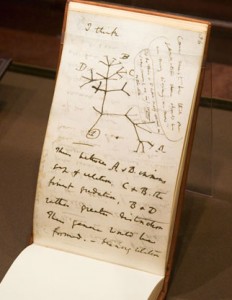
Dan recent article in the American Naturalist has taken a second look at some of the famously inflated species estimates, some going high as 100 million (Erwin, 1988). Estimates conducted by the authors indicate that projections above 30 million have probabilities of <0.00001. Their estimated range is more likely to be between 2.5 u 3.7 million species (with 90% confidence). This seems somewhat reasonable given that these extraordinary estimates were based heavily on extrapolation. There are clearly many difficulties in assessing diversity based on tropical arthropod surveys – this paper again uses phytophagous (plant-eating) beetles for estimates. They are careful to point out that these methods do not account for non-phytophagous insects, but assume that they will follow traditional biogeographic patterns of diversity. This is somewhat of a new concept given that when I was in college I was taught that parasitoids are counterintuitively not more diverse in tropical regions. This hypothesis is more often than not being proven false in the light of more precise modern taxonomic methodology. Rather proudly I helped play a role with the parasitoid project at the UIUC. Fil-qosor, host specificity is more extreme in tropical environments with hundreds of cryptic species hidden amongst rapidly radiating groups such as the microgastrine Braconids (Hymenoptera) – the same has held true across similar taxa.
One interesting note about the paper is their inclusion of a secondary estimation based on Lepidoptera canopy assemblages. They assumed that a) all Lepidoptera can be found in the canopy and b) that all leps are phytophagous. This is clearly a very conservative estimation given that not all Lepidoptera are found in the canopy and not all are phytophagous. While I do not have the numbers on hand, a certain percentage of lep diversity must have been excluded from these estimates. I will also go out on a limb and assume that the authors (Novotny 2002) did not include microlepidoptera morphospecies – and most likely estimated abundances with our current taxonomic understanding. However I do not have access to this 2002 paper, so I may be incorrect. Using these Lepidoptera numbers (from the same survey as the Coleoptera) a global diversity was estimated by Hamilton et. al. at around 8.5 millions arthropod species.
While I agree that extraordinary estimates of tens of tens (or hundreds) of millions of arthropod species are probably ridiculous; I am of the camp that current research is indicating that estimates of the lower tens of millions of species are possible. The authors have failed to include research that counterbalances their premise that tropical species exhibit a lower beta diversity (Novotny 2002, 2007). In the same journal, Natura 2007, Dyar et. al. have indicated that the American tropics exhibit a higher beta diversity than previously assumed. Either it can be said that estimates of beta diversity in the australasian tropics are incorrect, or they are incompatible with species assemblages of neotropical forests. All of this speaks to the difficulty in extrapolating estimations of species across all tropical regions. These estimates are based on comprehensive insect surveys of New Guinea, perhaps they do not accurately reflect the true diversity of American tropical forests, and these number ranges are low.
As a final thought, most assesments are focused on tropical arthropods. It seems all too possible that the total number of all species, including bacteria and archaea, can easily exceed tens of millions. But extrapolating those numbers is even more precarious than arthropods, given the extreme lack of knowledge we have.
Minn Chris Grinter, fuq Ġunju 4, 2010 
Ma tistax issib mod biex torbot l-video dirett (lanqas VodPod), iżda hawnhekk huwa l- link għas-sit Show Kuljum. Kemm fiżiċi miġbuda xagħar tagħhom barra meta semgħu dan wieħed? Yikes, huwa l-kelliem maħtur ġdid. Tinkwetax Neil, int mhux se imkien wara dan.
Wara li ma imxandra għadhom I ma tistax tgħid eżattament kif apologetic l-ispettaklu huwa, Iżda jidher iffukat ħafna fuq is-sejba l- “kreatur”. I jista tismagħha fil-vuċi John Stewart meta huwa jiġbed lura mill ripping fis ta Freeman “alla tal-lakuni” teorija. Forsi kien hemm editjar u aħna qbiżt il-kwistjoni fejn John Stewart staqsa “Morgan, tista 'tiddefinixxi fallacy loġiku għalina… forsi l-alla ta 'l waħda lakuni?” Nemmen li kull fiżiċista li qatt tgħid “Alla kien responsabbli” jgħid li bl-ebda tifsira aktar profonda minn meta Einstein magħruf evokat dice Alla. Dak li jgħidu, god mhux litterali u mhux personali biss jinsabu fil-sbuħija u Splendor tan-natura.
Minn Chris Grinter, fuq Ġunju 2, 2010 
Jekk hemm ħaġa waħda li tgħallimt fil-kulleġġ, kien kif faċilment tfixkilhom myself. I-tendenza li jżommu TV tiegħi fuq fl-isfond filwaqt li jien jaħdmu fuq il-kompjuter tiegħi, speċjalment tard bil-lejl meta I am normalment tifi gwerra rebbieħa kontra l-irqad. The other night something did catch my eye: a man holding dowsing rods in his back yard. Volume up, let the bullshit flow. It was just a flash of idiocy in an otherwise good program on home improvement. I’ve become accustom to crap-based TV on networks such as the History Channel or a Discovery network (quality of their shows include gems like “The Haunted: ghosts and pets”), but I was a little surprised to see BS grace my local PBS station.
Over on the “American Woodshop” host Scott Phillips was constructing a beautiful garden arbor. You can watch the entire thing here for free: Episode 1609: Period Architectural Moldings and Trim. There are no time stamps on the clip, but the dowsing comes in around the mid-point. While demonstrating the materials needed to secure the wood to the ground he cautioned against digging haphazardly into your yard without knowing where the underground water, electrical or gas lines were: solid advice. So in order to do this you should (tqassir) “take pieces of coat-hanger, anything will do, turn them into an “L”. As I walk forward the bars cross – hemm (they cross) – right there is the irrigation line. 9 out of 10 people have this ability, but you should call in a professional if there is any doubt“. My translation “OK guys, don’t worry about calling in some guy to do this, figure it out this way”. Please tell me what man who seriously watches a home improvement show at midnight would cede authority to someone else before giving it the good ol’ college try? Even if we grant for a moment that 9 out of 10 people could do this, what about that one guy who can’t? Isn’t it irresponsible to suggest that you can avoid power/water/sewer/gas only 90% of the time? Oops, hit that pesky gas line…
Being a scientist, a skeptic and a procrastinator – I wrote Scott a message about this so I could avoid my work at hand. Today he kindly replied saying: (excerpt)
“Our bodies are electromagnetic fields. Disrupt a field and things happen…. I learned the technique mentioned from a city worker that they used to find lines. Not from a charlatan. My team witnessed the objective use of this technique.”
Briefly, no, our bodies are not electromagnets. Everyone can hold a compass, or TV… without screwing them up. Franz Mesmer coined the idea of “Animal Magnetism” in the last half of the 18th century (also invented “mesmerization” AKA hypnotism) – and had it abruptly debunked by Benjamin Franklin and others. I’m also a bit worried to hear that city workers are relying on dowsing to locate public lines! But to move onward, let us dig into the myths of dowsing. I agree that there seems to be somewhat of an intuitive truth when it comes to dowsing, however false it is scientifically, it remains compelling. Żgur… electrical things underground effect sensitive wires above. And wow, look at all these guys who can find water, or power, jew… lost people… jew bombs? kollox sew, let’s stick to water for this conversation.
(continued)
Continue reading An Uphill Battle
Minn Chris Grinter, fuq Ġunju 1, 2010 Just immaġini ftit ta leps California komuni, meħuda tul il-firxa kosta qrib Santa Cruz ftit ġimgħat ilu. Jibdew jaħdmu mod tiegħi permezz ta 'xi xogħol b'lura ritratt…

Chalcedona Euphydryas
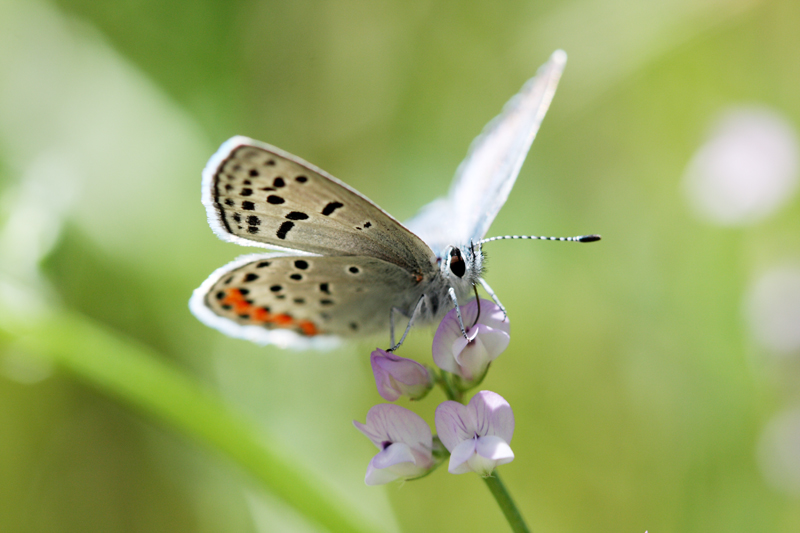
Acmon Plebejus
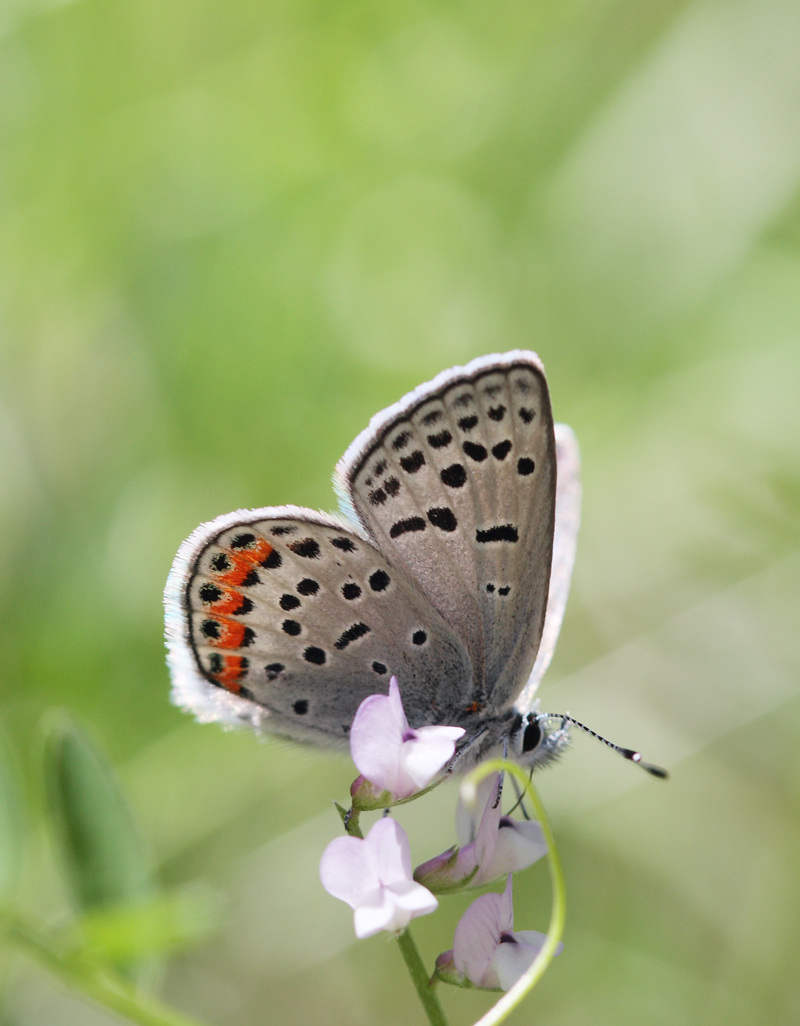
Acmon Plebejus

Arctostaphylella Ethmia fuq Eriodictyon sp.
Wieħed nota interessanti fuq Arctostaphylella Ethmia – l-isem huwa misnomer, din attwalment ma għalf fuq Arctostaphylos (Manzanita). Fil-ħin tal deskrizzjoni 1880 Walsingham kienet sabet pupating larva fuq il-weraq ta 'manzinata u assumiet li kien impjant ospitanti tagħhom. Fil monografu isturdament Jerry Powell tal-grupp huwa juri dan kamla ikun trabba minn Eriodictyon – li jiġri li jkun l-fjura tal-kamla huwa staġnat fuq. Iż-żewġ pjanti jikbru ġenb xulxin, u huwa pjuttost faċli li wieħed jara kif caterpillar wandering ssib mod tagħha fuq ġar.
|
Xettiċiżmu
|













